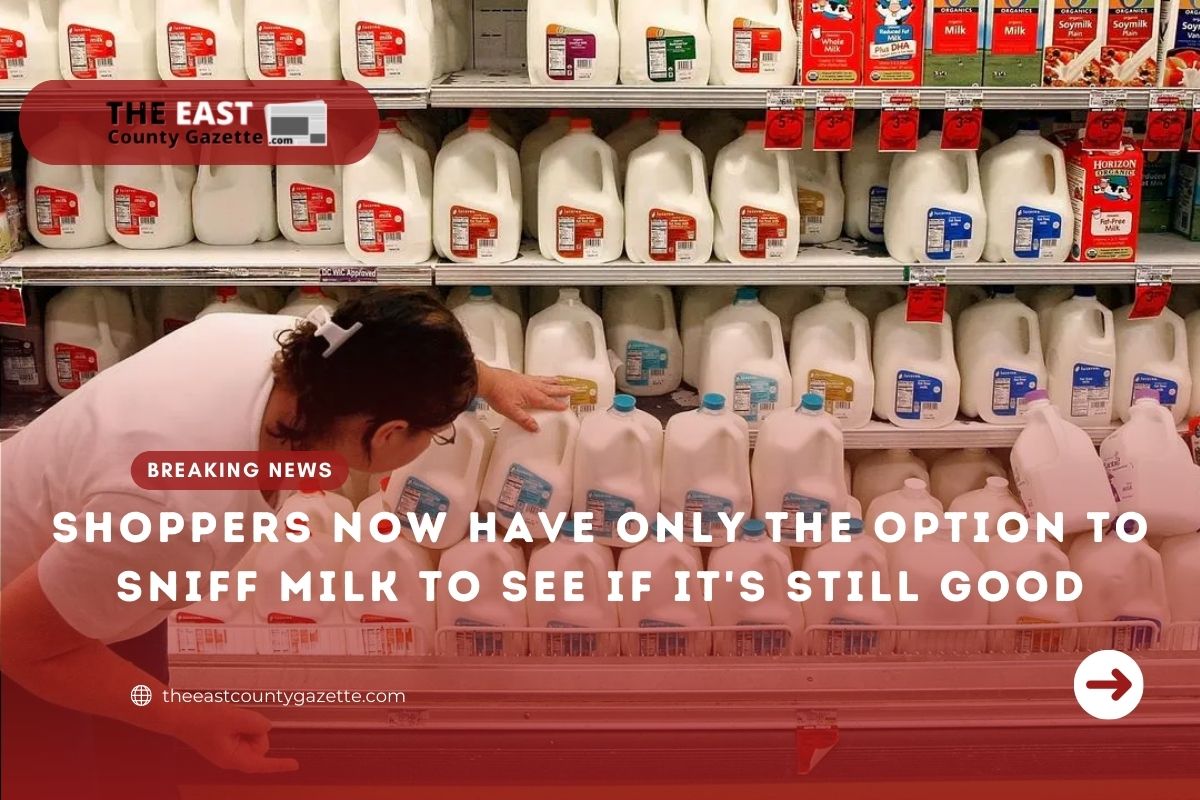Going forward, detecting whether milk is still good to drink will require people in Britain to rely on their noses instead of their eyes.
In the near future, Morrisons, one of the country’s largest supermarket chains, will eliminate the “use by” date on 90% of milk sold in its stores.
Several million gallons of milk are thrown away every year due to consumer misunderstandings about printed expiration dates.
The decision is part of an effort to reduce this waste.
The result of this waste is an increase in carbon in the atmosphere as well as an unnecessary waste of valuable resources that are required to raise dairy cattle.
According to Morrisons, it will continue to use “best before” dates, which indicate the date at which the milk loses much of its flavor but does not go bad immediately. Several guidelines are offered for determining whether milk is drinkable, The Guardian reported.
“Customers should check milk by holding the bottle to their nose. If it smells sour then it may have spoiled. If it has curdled and lumps have formed that is also a sign it should not be used. Milk’s life can be extended by keeping it cool, and keeping bottles closed as much as possible.”
Milk waste in the U.K. is estimated at 330,000 tonnes of milk.
That’s 7% of the country’s production every year.
Milk, after potatoes and bread, is the third most wasted food item at home, according to the Treehugger in its report.
Other countries are also experiencing high numbers. Denise Philippe, senior advisor to the National Zero Waste Council said that one million cups of milk are wasted in Canada every day, and dairy and eggs make up 7% of all food waste.
Food expiry dates have been decided by the Canadian Food Inspection Agency (CFIA) for shoppers, but the problem remains unresolved.
Read More: ‘Surprise’ Tax Refunds Worth 1.5 Million Will Be Sent Out By IRS This Week
Food expiration labels have also been recommended by the Consumer Goods Forum, but nothing has been finalized or set in stone.
The majority of food labels are voluntary and arbitrary, except for those that expire in less than 90 days – but even then, as Philippe said,
“It is up to businesses to determine which food has less than 90 days shelf life. The range of interpretation of this is significant. Best before dates can be applied at the point of processing and manufacturing, but also at the point of assembly. There is little guidance on how to determine what the actual date is, nor what expertise is required to determine the date. This means that best before dates are too often applied in an inconsistent manner.”
She goes on to explain that date labels contribute to food waste and loss by leading to food loss.
“While CFIA, through its Food Label Modernization, has made changes such as standardizing date formats (for example, reducing confusion over whether the label 1/2 refers to Jan. 2 or Feb. 1), there is still a lack of public understanding that ‘best before’ refers to peak freshness and does not reference a health and safety concern.”
It is for this reason that Morrison’s change may not be as successful as it had hoped.
Most shoppers might not understand how to distinguish “use by” from “best before”.
Experts recommended changing the language to be more clear.
It has been suggested by Philippe that food manufacturers should remove best before date labels entirely and replace them with clearer wording that gives consumers clear instructions, such as “Peak Quality” or “Use By/Freeze By.”
Morrisons’ move has been praised by the U.K.’s anti-food waste charity Wrap, which hopes that other supermarkets will follow Morrisons’ lead.
“It shows real leadership and we look forward to more retailers reviewing date labels on their products and taking action,” Wrap’s CEO Marcus Gover said to the Guardian.
Food manufacturers and supermarkets aren’t required to act immediately, however.
It is definitely fine if a milk looks, smells, and tastes good.
So, consumers should carefully consider whether or not they would like to eat or drink something before making a decision.
Read More: Large Share of PPP Loan Worth $800 Billion Didn’t Go to Workers as Fraud Speculation Heightens
The practice of eating three times a day is important.
And considering that most people do these, they have a great opportunity to discover that which is not good and that which is good.

